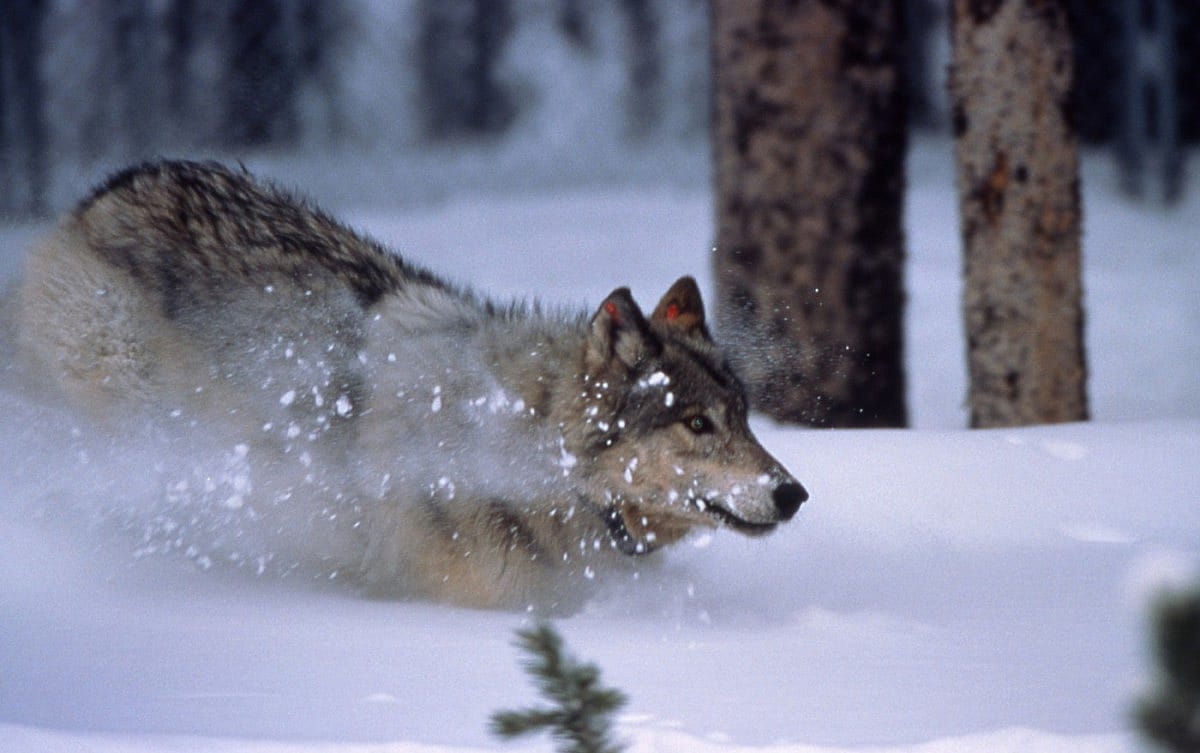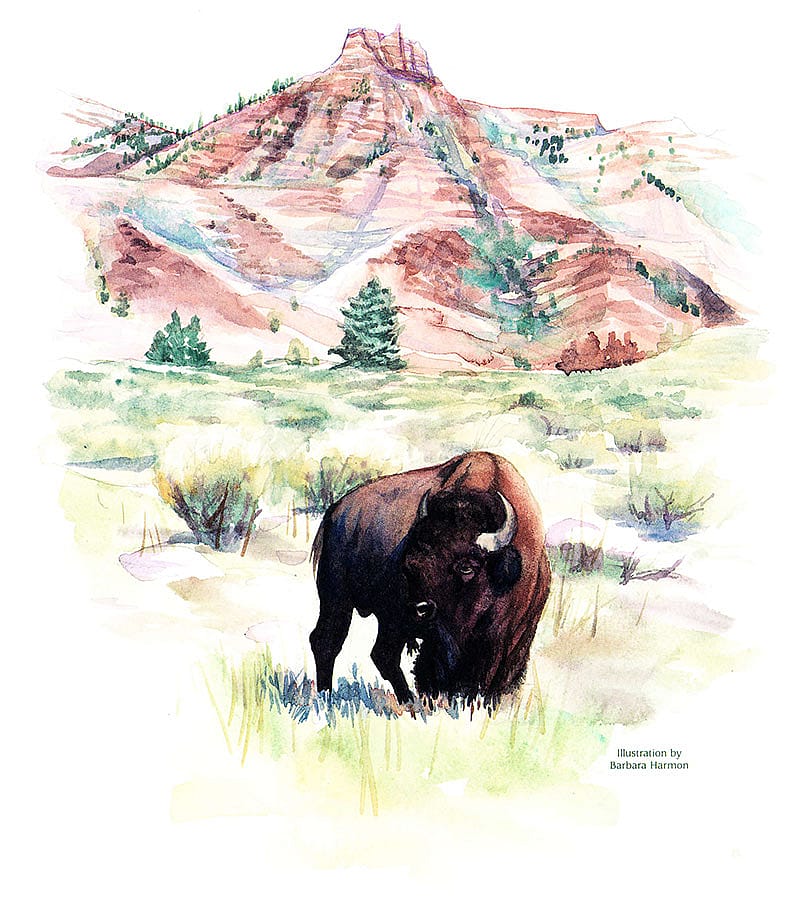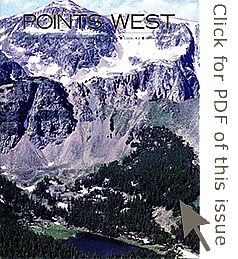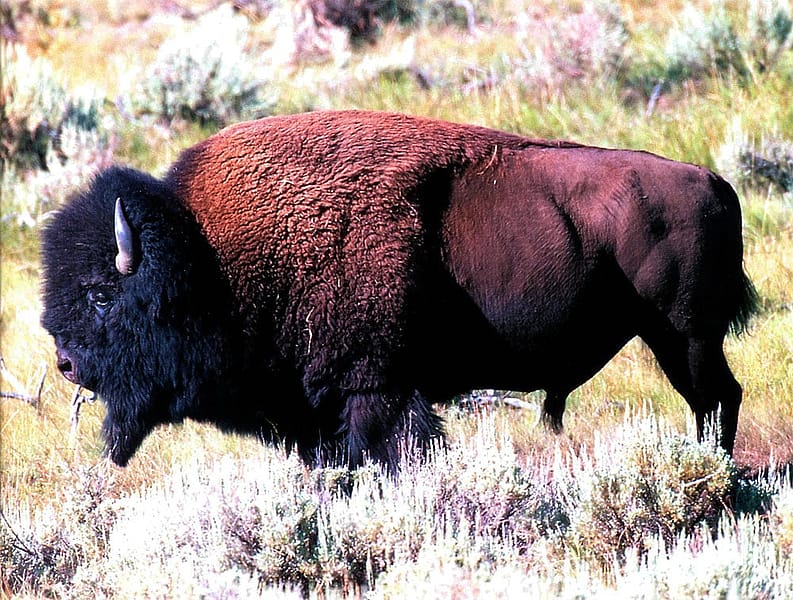
Natural History? Natural Destiny! – Points West Online
Originally published in Points West magazine
Spring 2002
Natural History? Natural Destiny!
By Wally Reber
Former Associate Director
In their way, our collections have always catalogued the West, its character and its characters.

Through those collections, we could and often would, still can and do, weave stories of settlement and survival. With art and artifact we have added flesh to legend and fact to fiction. Each of those stories or statements was based deeply on spirited people drawn to, or already living in the West…and each one of those stories was influenced by the place.
Our western land has always and inevitably encouraged life and enabled death. It has allowed men to grow and crops to shrivel, animals to thrive and sunsets to speak. For many of us, the West escapes our understanding, but often helps us to better understand ourselves.
Can any story of the West be told in its entirety, without reference to and reverence for the land? Can we as an institution fulfill our role, our responsibility, without sharing with our constituency the story of this land and its natural history, with the same energy and intellect that we apply to the story of its men and their nature’s histories?
Our institution, long before it became the Center, has always been intrigued with the possibilities and aware of the responsibilities of creating a natural history museum, a museum through which the story of the land could be eloquently told. Such a museum would also find a logical linkage within the mission that the institution had accepted for itself. To that end, in mid-century, artist Edward Grigware, presumably at the direction of the board of the Buffalo Bill Memorial Association, drew up a building plan for how such a museum might look, at least on the outside.
Between then and now, much has happened to our world, our West and our institution. Some acknowledge that our world is shrinking and that the West is not what it was. We are not what we once were either. Bigger in size, with greater resources, we have assumed larger responsibilities. Our collections are better now than ever and we are focused in our concentrations. From our origins as the Buffalo Bill Museum, we have added the Whitney Gallery of Western Art, the Plains Indian , and the Cody Firearms Museum, each museum in its turn contributing to the breadth of our collections, and immensely to our understanding of the West.
As one small step in the direction of our destiny, in 1994 the [then-named] Buffalo Bill Historical Center began the preliminary planning for an exhibition celebrating the buffalo. In preparation for the exhibition, the Center gathered together a team of known and renowned experts on the animal and its environment to review the themes and discuss the methodology for presentation. Those discussions involved numerous and divergent perspectives, sometimes focusing on undisputed fact, supportable science and, every now and then, wishful thinking. Most of all, the conversations became a dialogue on a subject that was near and dear to everyone in the room and everyone of the West. The result of those conversations became the raw frame of reference for the development of an exhibition on the buffalo presented in the summer of 1996.
The exhibition, titled Seasons of the Buffalo was a landmark installation for the Center and a benchmark for the possibilities of an interdisciplinary exhibit. As a landmark, it was recognized by the American Association of Museums in its annual exhibition awards competition. As a benchmark, it was the first time that the Center created a broad multidisciplinary exhibition, utilizing materials and ideas from each of the diverse collections of the Center, then supplementing them with borrowed natural history collections.
The fact that we became involved in the exhibition signaled our approach to the natural history stage. It also proved that it was possible to view natural history through the lens of the humanities. With the exhibition, we found that we could present new information about natural history, especially as we acknowledged that man and his influence was integral to our understanding of that history. It became apparent that by utilizing our collections and our special understanding of the West, then complementing them with loaned natural history materials, we could develop a natural history perspective that was not only unique in its presentation, but also unique to the Center.
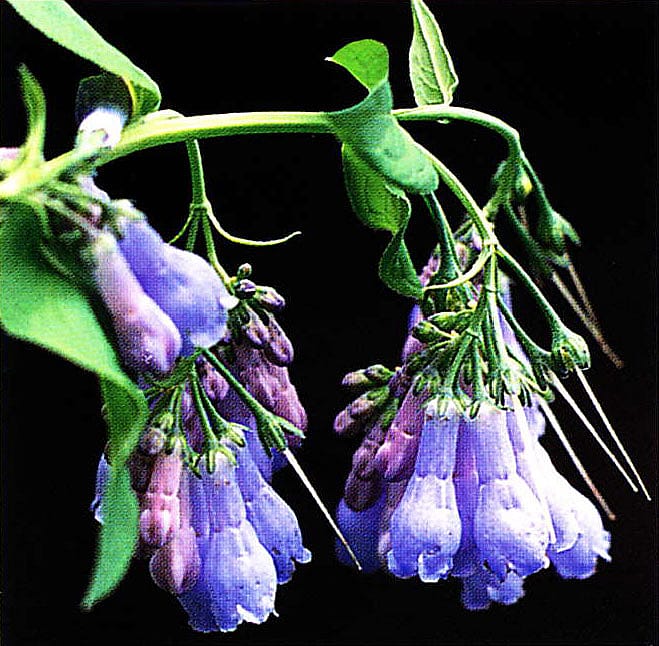
In part because of that obvious success, the Center began anew to examine the idea and the institutional impact of a natural history museum. The creation of a natural history presence, however it was conceived, hinged upon a fundamental understanding of the breadth of possibilities looming in front of us. Looking at natural history museums from a traditional perspective, the Center was behind the curve when it came to amassing natural history collections that would equal the diversity and significance of our existing collections. Consideration had to also be given the level of technical support that such a new and potentially different collection would demand. The added physical space, in and of itself, would present an operating and financial challenge. Finally, every support service would be expected to maintain the level of commitment and care equal to those afforded the other museums of the Center.
With the election of Senator Alan K. Simpson in 1997, as chairman of the board of the Memorial Association, and the hiring of B. Byron Price in 1996, as the new Executive Director, the Center had new leadership with new vision, and the quest for the creation of a natural history museum moved rapidly forward. With both men energized by the idea, committed to a plan, and with a significant portion of the funding guaranteed by Nancy-Carroll Draper, the project was given remarkable life. The process for developing the plans for the new museum and methods of funding the project were as uniquely different for us as the natural history idea once was.
As Byron left us last fall, he left in place the literal foundation for the Center’s next great museum, by any available yardstick, a significant contribution to the community of Cody and to our broad community of museums. He left in place, also, the passion and the people to bring the museum and the ideas which it will represent to life, adding at once new relevance for the Center and remarkable, new resources for all of us so that we might achieve better understanding of ourselves and America’s western land.
While Seasons of the Buffalo may have signaled our approach to the natural history stage, the commitment to the idea, the construction, and now [2002] the opening of the Draper Museum of Natural History confirms finally, our arrival.
Post 217
Written By
Nancy McClure
Nancy now does Grants & Foundations Relations for the Center of the West's Development Department, but was formerly the Content Producer for the Center's Public Relations Department, where her work included writing and updating website content, publicizing events, copy editing, working with images, and producing the e-newsletter Western Wire. Her current job is seeking and applying for funding from government grants and private foundations. In her spare time, Nancy enjoys photography, reading, flower gardening, and playing the flute.
